Being different can be good or bad, depending on the context, and the same is true for carmakers. Toyota's near-spotless reputation for making dependable vehicles may have secured it the top spot in the automotive world, but that doesn't mean that the Japanese carmaker hasn't made some bold decisions.
This has led to some wacky vehicles. Depending on which part of the world you live in, there is a good chance you probably didn't know some of those existed. Without further due, I am presenting you some very weird Toyota cars that would make you ask yourself "what were they thinking”?
Toyota Will Vi
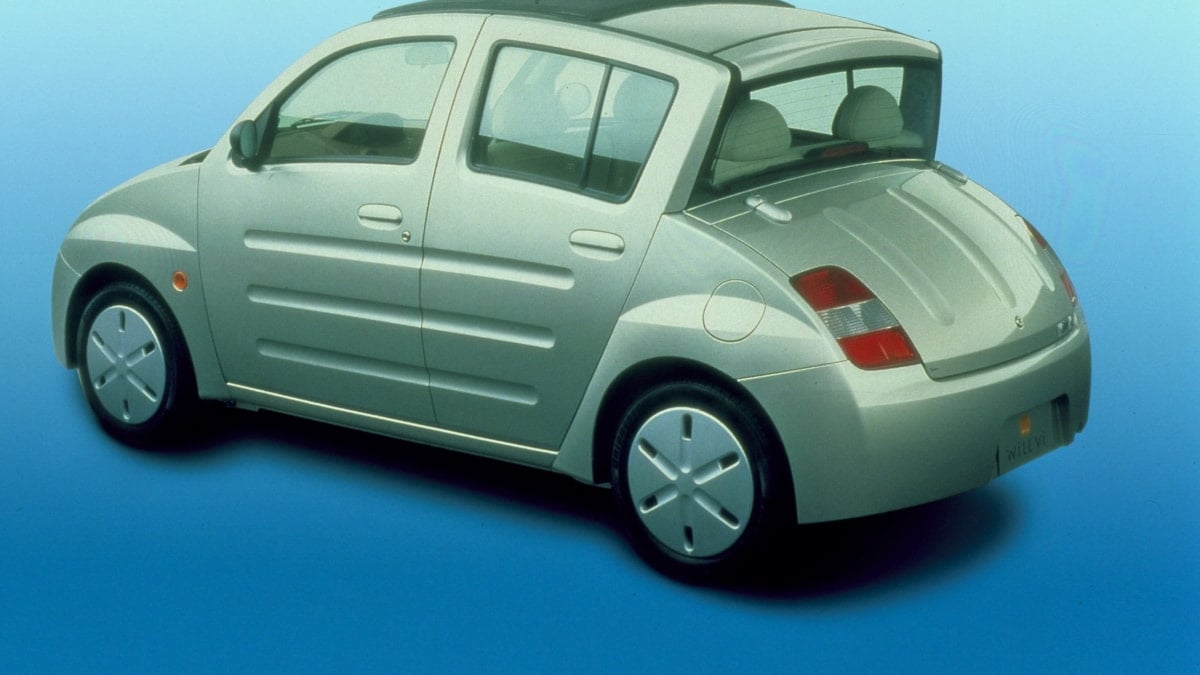
Toyota is no stranger to collaborations and this weird-looking car is the child of an unlikely partnership. In 1999, Toyota and what is now known as Panasonic (formerly Matsushita Electric Industrial) collaborated on a sub-compact, Toyota-badged car that was neither a hatchback nor a sedan.
The Will Vi was bigger than a Kei car and featured a three-box design (kind of), reminiscent of cars from the 1950s. Honestly, the thing resembles a soap box. There were two more Toyota Will models – the Will VS and Will Cypha, but the Will Vi takes the crown for its quirkiness.
1999 Toyota Will Vi performance specifications
Engine: 1.3-liter, naturally-aspirated, DOHC, inline-four
Output: 88 horsepower at 6,000 RPM, 90 pound-feet at 4,400 RPM
Transmission and driveline: 4-speed automatic, front-engine, front-wheel drive
Curb weight: 2,072 pounds
0-60 MPH: N/A
Toyota Previa
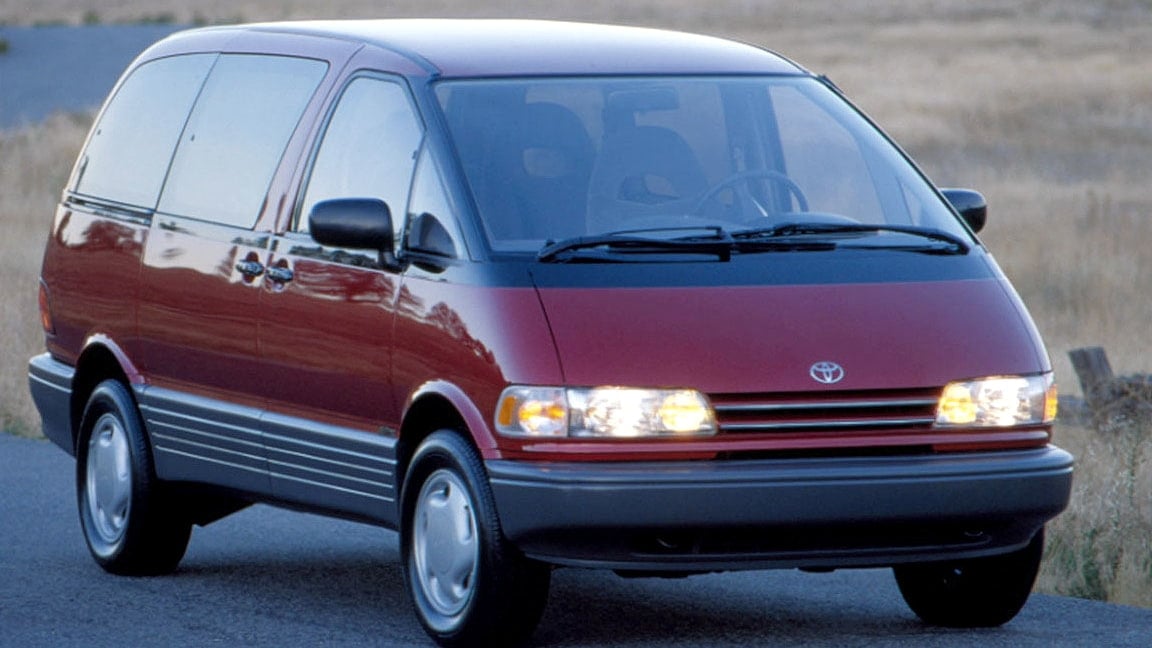
When you hear "mid-engine" and "supercharged”, you tend to think of high-performance vehicles. In 1996, Toyota decided to infuse these properties into a minivan thus spanning the Previa. All three generations featured a front-mid-engine layout, with later variants even getting the 2GR-FE V-6 engine, normally found in cars like the Camry or various Lexus models. First-generation Previas could also be had with a supercharged, 2TZ-FZE engine.
1996 Toyota Previa performance specifications
Engine: 2.4-liter, supercharged, DOHC, inline-four
Output: 161 horsepower at 6,000 RPM, 201 pound-feet at 3,600 RPM
Transmission and driveline: 4-speed automatic/ 5-speed manual, front-mid-engine, rear-wheel drive/ four-wheel drive
Curb weight: 3,755 pounds
0-60 MPH: 10.1 seconds
Toyota Origin
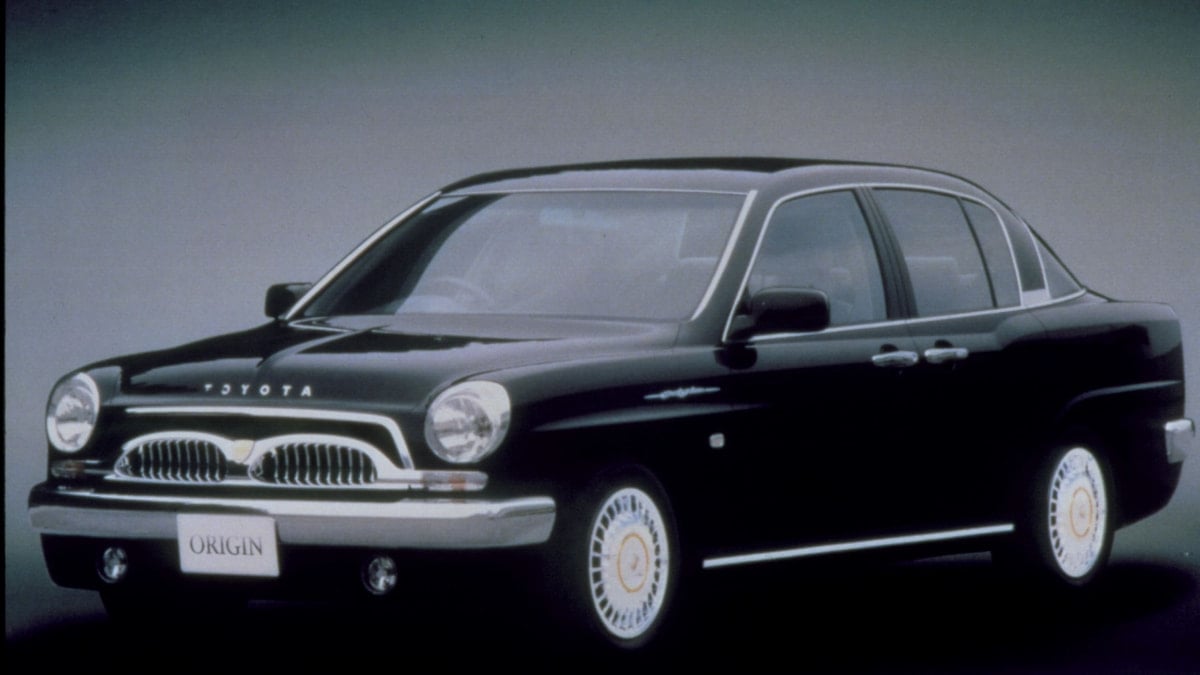
In the year 2000, Toyota decided to celebrate 100 million vehicles produced in Japan with a special model. Through a collaboration with Kanto Auto Works, Toyota commissioned a limited-edition, hand-crafted sedan, sharing a platform with the Toyota Alteza (Lexus IS) and other Toyota/ Lexus rear-wheel-drive models.
The retro styling was reminiscent of the original, 1955 Toyota Crown, and was complimented by rear suicide doors, like on a Rolls-Royce. What may surprise you is the choice of engine – the 2JZ. Sadly, there was no manual. Just 1,073 units were produced.
2000 Toyota Origin performance specifications
Engine: 3.0-liter, naturally-aspirated, DOHC, inline-six
Output: 215 horsepower at 5,800 RPM, 209 pound-feet at 4,800 RPM
Transmission and driveline: 4-speed automatic, front-engine, rear-wheel drive
Curb weight: 3,439 pounds
0-60 MPH: 7.5 seconds (est.)
Toyota Yaris Verso/ FunCargo
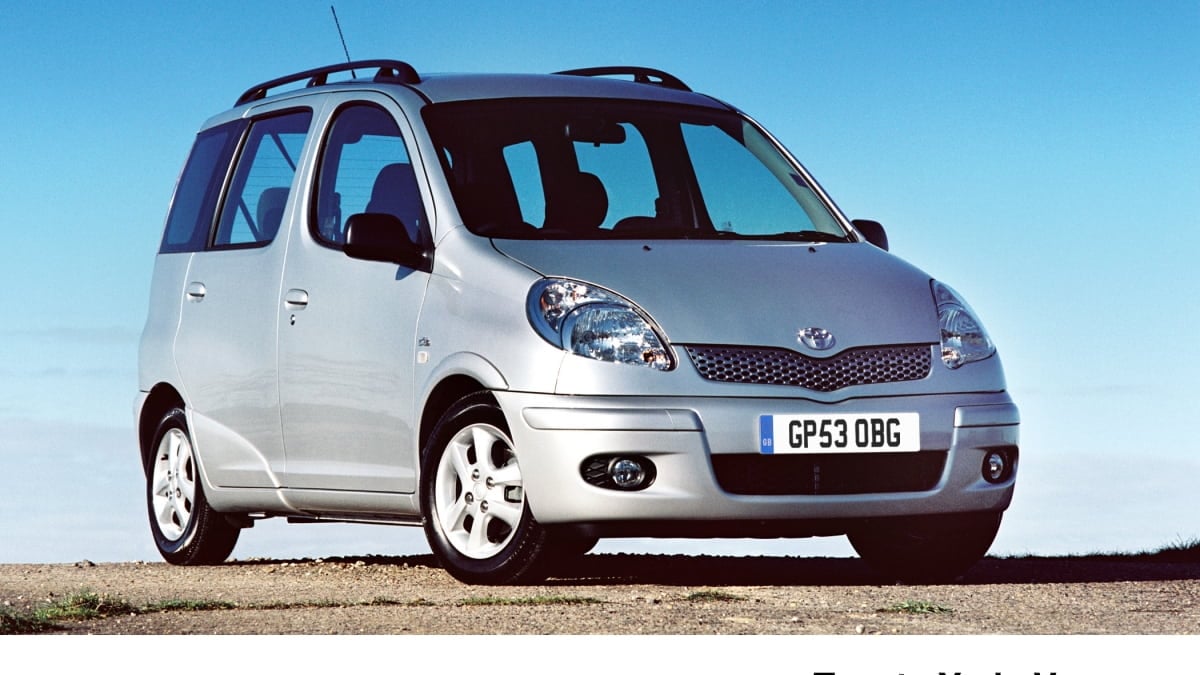
Over the years, Toyota has produced many mini-MPVs, but without a doubt the weirdest of them all is the Yaris Verso, also known in Japan as the FunCargo. Based on the first-generation Toyota Yaris/ Vitz, the FunCargo features a 5.1-inch longer wheelbase and a boxy look. The mechanicals are identical to the Vitz.
Toyota Yaris Verso/ FunCargo performance specifications
Engine: 1.5-liter, naturally-aspirated, DOHC, inline-four
Output: 105 horsepower at 6,000 RPM, 107 pound-feet at 4,200 RPM
Transmission and driveline: 5-speed manual/ 4-speed automatic, front-engine, front-wheel drive
Curb weight: 2,237 pounds
0-60 MPH: 8.6 seconds
Toyota Classic
One of the most unknown, retro-styled cars comes from Toyota. In 1996, Toyota gave us the aptly named Toyota Classic. It was styled after the 1935-1943 Toyota AA/ AB. Also classic was the output of the 3Y-E engine, which was less than 50 horsepower per liter. The interior was more contemporary, but featured wooden accents to keep in line with the car's classic exterior. A total of 100 examples of the Toyota Classic were built in 1996.
1996 Toyota Classic performance specifications
Engine: 2.0-liter, naturally-aspirated, OHV, inline-four
Output: 97 horsepower at 4,800 RPM, 118 pound-feet at 3,800 RPM
Transmission and driveline: 4-speed automatic/ 5-speed manual, front-engine, rear-wheel drive
Curb weight: 3,263 pounds
0-60 MPH: N/A
Toyota Sera
Toyota Sera is weird for several reasons. First of all, it was sold in Japan, as an alternative to the soon-to-be resurrected, Toyota MR-2. Needless to say, it did not have the same success, likely due to the "wrong” wheel drive. Probably the quirkiest characteristic of the Sera are the butterfly doors, with partially opening windows, similar to the Subaru SVX.
There were a few trim levels, but in terms of mechanics, there was only one engine. The only choices you could made were automatic or manual transmission or whether to have ABS or not. The optional, anti-lock brakes were vented discs all around while the base model utilized drums at the rear.
1990 Toyota Sera performance specifications
Engine: 1.5-liter, naturally-aspirated, DOHC, inline-four
Output: 104-108 horsepower at 6,400 RPM, 100 pound-feet at 4,000 RPM
Transmission and driveline: 4-speed automatic/ 5-speed manual, front-engine, front-wheel drive
Curb weight: 2,050 pounds
0-60 MPH: 10.2 seconds
Toyota Mega Cruiser
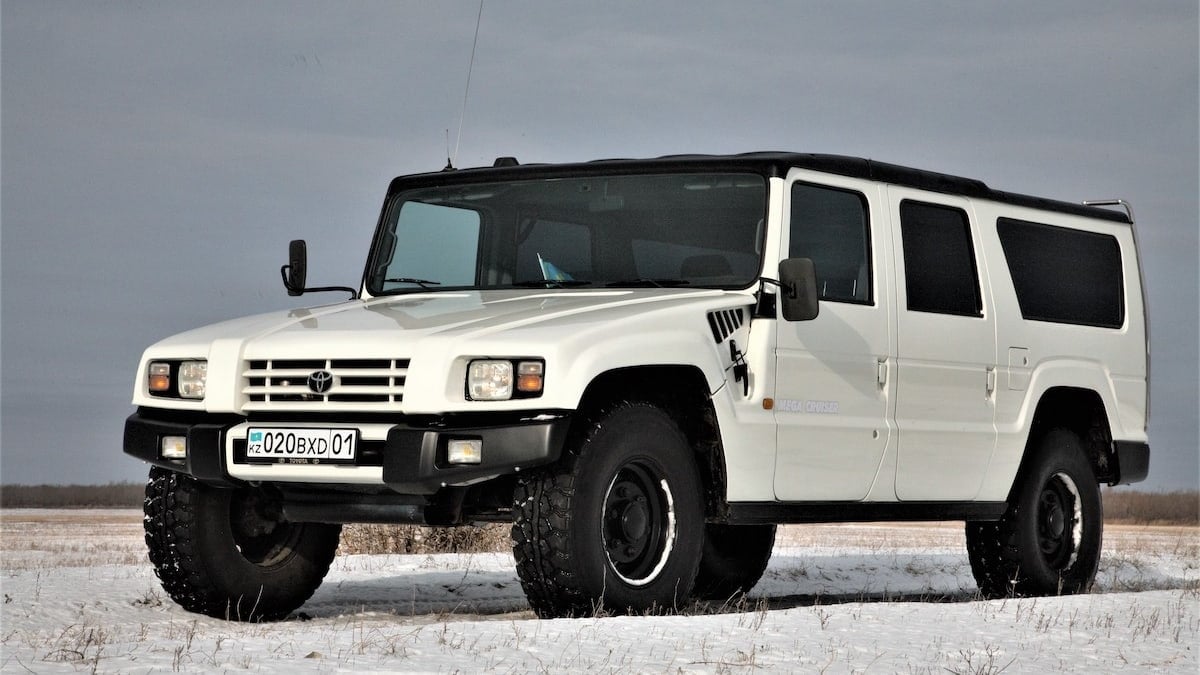
Toyota's Land Cruiser is not the most rugged SUV ever made. That's because in 1996, four years after the HMMWV-based Hummer H1 came around, Toyota, essentially, made a Japanese equivalent. Like the Hummer H1, the Mega Cruiser was meant for military purposes, although a limited run of road-going variants was made.
It was no less capable either. Toyota Mega Cruiser has a 49-degree approach angle, 45-degree departure angle, 33-degree break-over angle, and a maximum cant of 50 degrees. Between 1995 and 2001, around 3,000 Toyota Mega Cruisers were built for non-military applications.
1996 Toyota Mega Cruiser performance specifications
Engine: 4.1-liter, turbodiesel, OHV, inline-four
Output: 153 horsepower at 3,200 RPM, 282 pound-feet at 1,800 RPM
Transmission and driveline: 4-speed automatic, front-engine, 4X4
Curb weight: 6,283 pounds
0-60 MPH: 14.8 seconds
Toyota Mirai
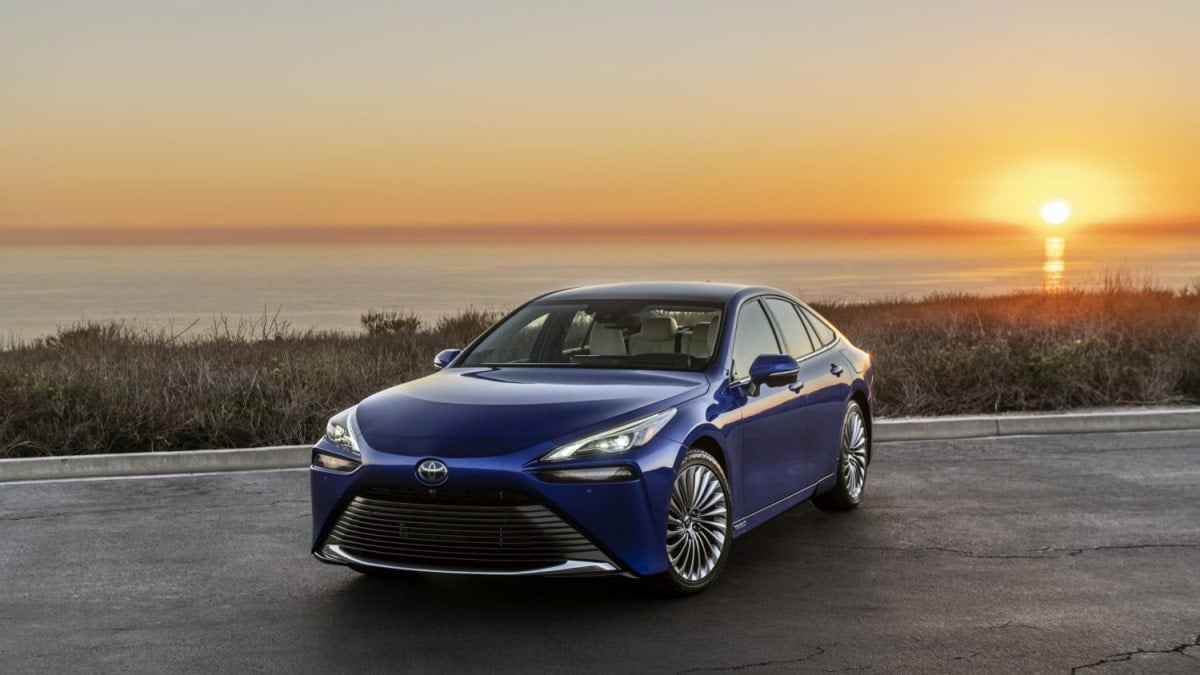
Toyota's Mirai may have been the right car at the wrong time. Despite many Toyota Mirai owners wanting their money back, the Japanese carmaker is still offering the second-generation Mirai in 2024. The FCEV Mirai definitely looks the part, but Toyota's decision to sell a fuel-cell electric vehicle when cars like the Toyota Camry are available is an odd one.
2020 Toyota Mirai performance specifications
Engine: 1x electric motor, 1.2 kWh lithium-ion battery, 4JM fuel cell
Output: 182 horsepower, 221 pound-feet
Transmission and driveline: 1-speed, rear-motor, rear-wheel drive
Curb weight: 4,230-4,300 pounds
0-60 MPH: 8.7 seconds
Toyota Cavalier
Toyota Cavalier is as mundane as a car can be and yet, it still managed to be one of the company's weirdest products. That's because it isn't really a Toyota. In an effort to go around export restrictions, Toyota briefly sold a rebadged version of the third-generation Chevrolet Cavalier.
It was also, briefly, sold in Japan with a slightly more upscale interior, featuring more generous use of leather, primarily on the shift knob and steering wheel. There was also a coupe variant. The 2000 facelift models received a facelift and with that came a special, TRD body kit. Needless to say, the car wasn't very popular in Japan.
1995 Toyota Cavalier performance specifications
Engine: 2.4-liter, naturally-aspirated, DOHC, inline-four
Output: 150 horsepower at 6,000 RPM, 160 pound-feet at 4,400 RPM
Transmission and driveline: 4-speed automatic/ 5-speed manual, front engine, front-wheel drive
Curb weight: 2,562-2,900 pounds
0-60 MPH: 7.9 seconds
Toyota C+Pod
I can't blame you for not knowing about Toyota's C+Pod. I didn't know about it myself until a few hours before I penned this article. It is a Kei car, which automatically means, it is meant for Japan. This true JDM car is, essentially, Toyota's BEV equivalent to the Smart ForTwo. Its total length is 98 inches and its width – less than 51 inches. The little Kei car by Toyota was produced between 2021 and 2024.
2021 Toyota C+Pod performance specifications
Engine: 1x electric motor, 9.06 kWh Lithium-ion battery
Output: 13.5 horsepower, 41.3 pound-feet
Transmission and driveline: 1-speed, rear motor, rear-wheel drive
Curb weight: 1,477 pounds
0-60 MPH: N/A
About the author
Dimitar Angelov's automotive interests made him an expert in a wide variety of vehicles. Japanese brands like Toyota are closest to his heart, although performance cars in general are his favorite segment, which is why he is constantly on the lookout for the best deals on the market. Dimitar Angelov's car passion and knack for the written word led him to complete a Master of Arts in Media and Communications, and classic car restoration. Dim is happy to get behind the wheel of any car and share his impressions. You can follow Dimitar on X, Linked-in, Instagram, and Facebook.
Image sources: 1991-1997 Toyota Previa, 2000 Toyota Will Vi, 2000 Toyota Origin, 2003 Toyota Yaris Verso, 1996 Toyota Mega Cruiser, 2023 Toyota Mirai












